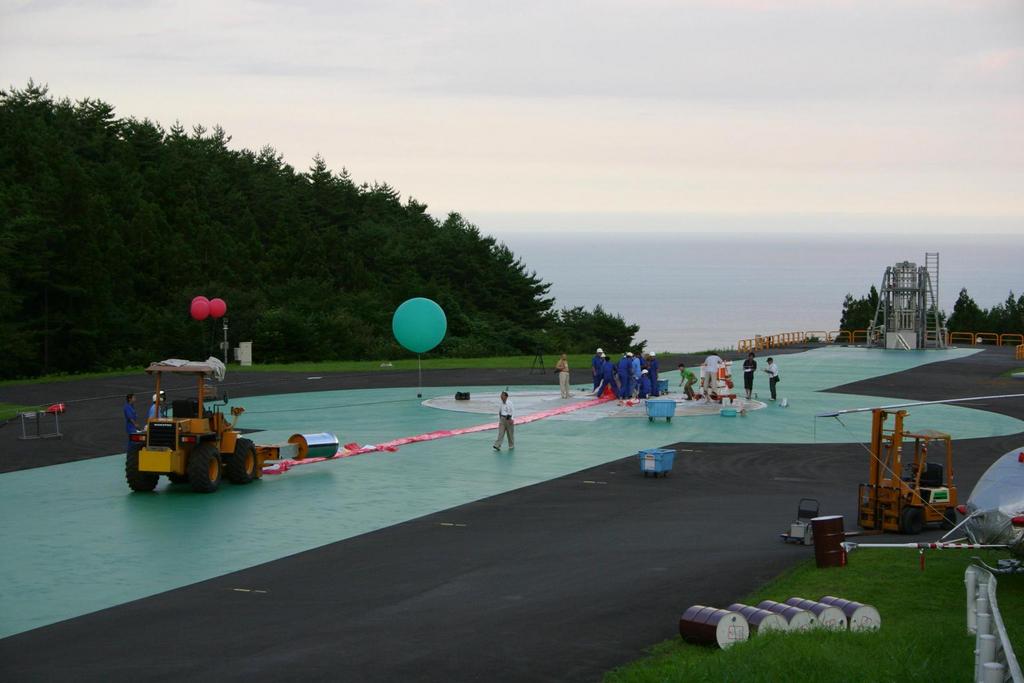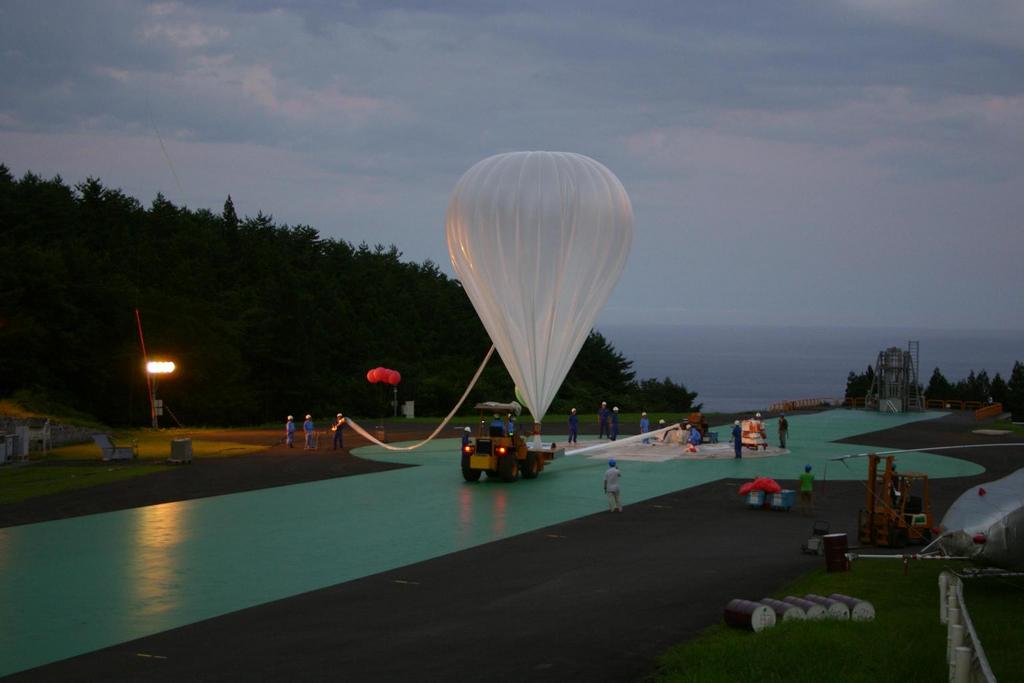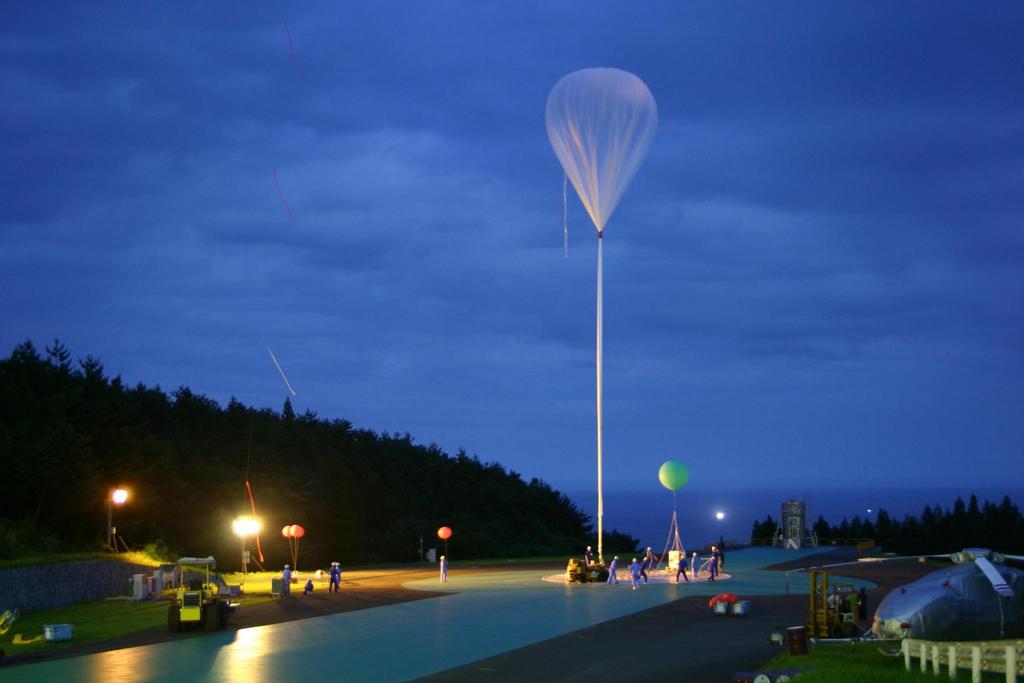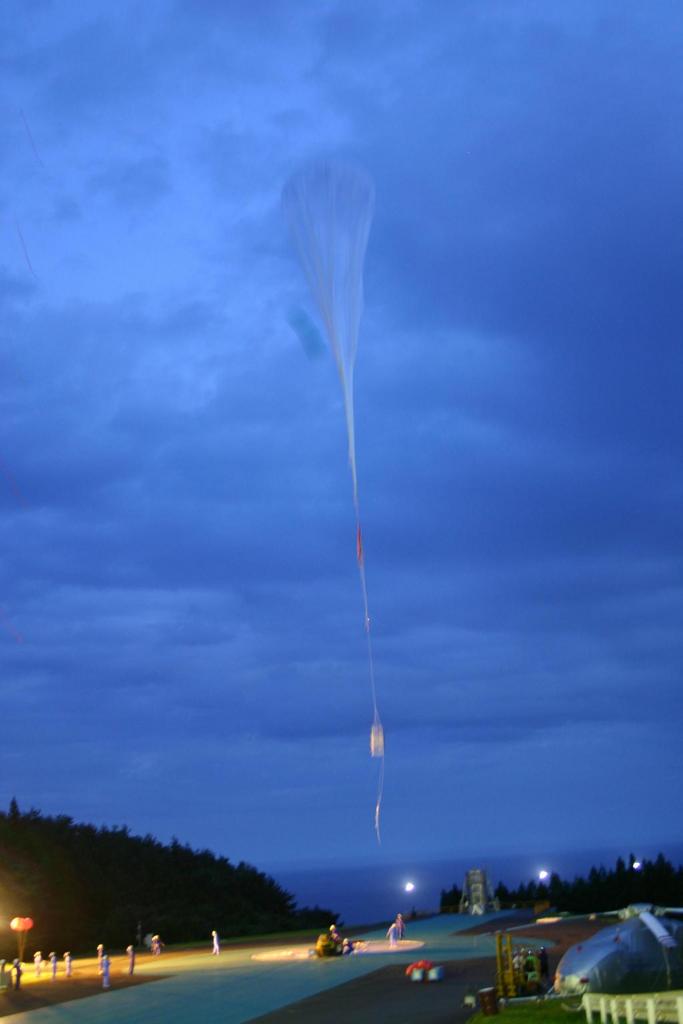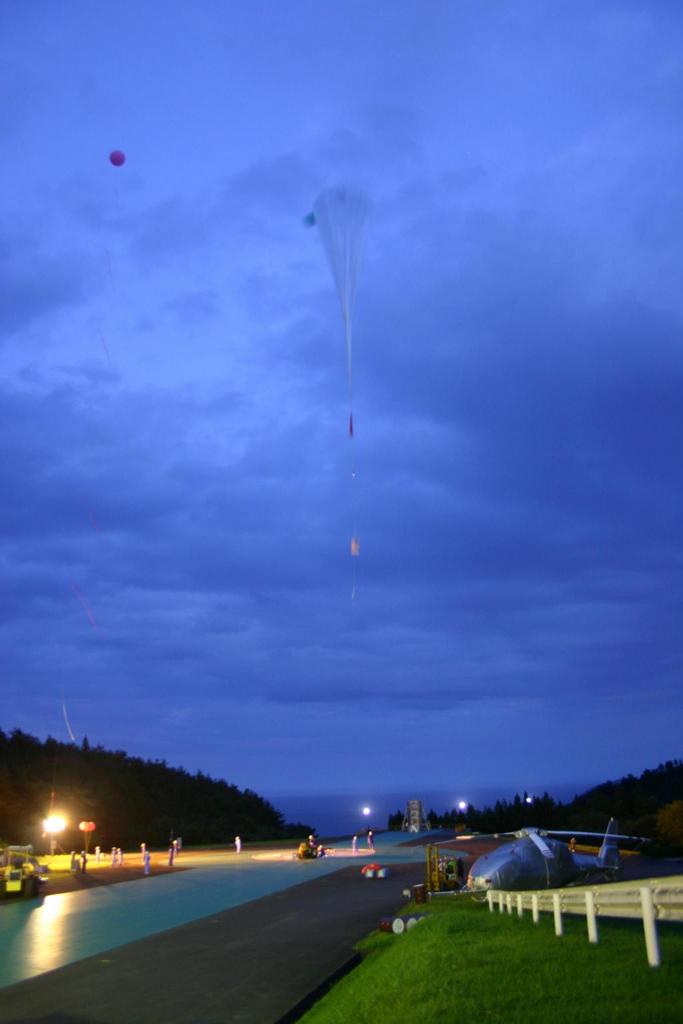Purpose of the flight and payload description
Three types of scientific payloads were installed at the 1 m-cubic gondola: 3-axis VLF electric filed antenna and receiver (VLFR), 4 video frame CCD cameras (CCDI) and 2-color photometer (PM). The video images were stored in 4 HD video recorders, which have 20GB memories respectively, at 30 frames/sec and VLFR and PM data were put into digital data recorder with 30 GB memory at sampling rate of 100 kHz.
Details of the balloon flight
Balloon launched on: 8/25/2006 at 18:33 jst
Launch site: Sanriku Balloon Center, Iwate, Japan
Balloon launched by: Institute of Space and Astronautical Science (ISAS) / Japan Aerospace Exploration Agency (JAXA)
Balloon manufacturer/size/composition: Zero Pressure Balloon
Flight identification number: B5-134
End of flight (L for landing time, W for last contact, otherwise termination time): 8/26/2006
Balloon flight duration (F: time at float only, otherwise total flight time in d:days / h:hours or m:minutes - ): ~ 5 h
Landing site: In the Pacific Ocean
The balloon was successfully launched at 18:33 LT at Sanriku Balloon Center. The balloon floated at the altitude of 13 km until about 20:30 LT, going eastward and went up to 26 km at a distance of 130 km from the coast. Then went back westward at the altitude of 26 km until midnight.
The total observation period was about 5 hours.
Most of the equipments worked properly except for one video recorder. Some thunderstorms existed within the direct field of view from the balloon in the range of 400-600 km and more than about 400 lightning flashes were recorded as video images. Also one sprite halo was captured by CCDI which occurred in the oceanic thunderstorm at a distance of about 500 km from balloon. This was the first TLE image obtained by a balloon-borne camera.
Simultaneous measurements of VLF sferics and lightning/TLE images will clarify the role of intracloud (IC) currents in producing and/or modulating TLEs as well as cloud-to-ground discharges (CG). Especially the effect of horizontal components will be investigated in detail, which cannot be detected on the ground, to explain the unsolved properties of TLEs, such as long time delay of TLE from the timing of stroke and large horizontal displacement between CG and TLEs.
External references
- Information on the balloon flights performed during 2006 (In Japanese) ISAS Annual Report, 2006
2665If you consider this website interesting or useful, you can help me to keep it up and running with a small donation to cover the operational costs. Just the equivalent of the price of a cup of coffee helps a lot.

